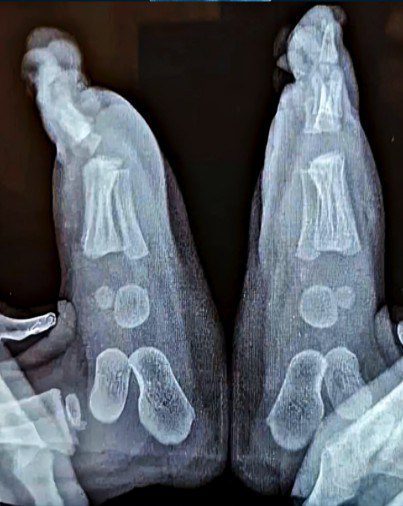From the moment they’re born, babies begin their extraordinary journey of growth and development. As new parents, one of the first things we often think about is the comfort and care of our baby’s tiny body parts, especially their feet.
While shoes are a staple in our wardrobe, for babies, wearing shoes too early can actually impede their growth. Understanding why this is important can help parents make better decisions for their child’s foot health.

Understanding Baby Foot Development
When babies are born, their feet are soft, pliable, and rapidly developing. Unlike adults, who have fully formed arches and stable bones, babies’ feet are largely cartilage, which means their bones are still soft and flexible. Over time, these cartilage bones will ossify (turn into bone) as they grow and strengthen, but they need to be given time to develop naturally.
During the first year of life, a baby’s foot undergoes dramatic changes. By the time they reach 12 months, the structure of their foot is still in its formative stages, with the arch not fully developed. This period of early foot development is critical, and what parents do during these early months can have lasting effects on the foot’s overall health.
The Role of Barefoot Time in Foot Development
Allowing babies to spend time barefoot plays a pivotal role in developing healthy feet. Barefoot time helps babies develop muscle strength and flexibility in their feet, as they are naturally using their toes and foot muscles to grip the ground and maintain balance. It also promotes better alignment of the foot and strengthens the ligaments and tendons that support proper foot structure.
When babies are allowed to move freely without shoes, they can engage in natural movements like stretching, flexing, and wiggling their toes, all of which promote muscle and bone development. This is particularly important for babies who are just starting to learn how to crawl, stand, and walk.
In fact, pediatricians often recommend that babies be barefoot for as long as possible, especially during the crucial months when they are learning to walk. This is when they need to build the foundation for balance, coordination, and strength.
What Happens When Babies Wear Shoes Too Early?
While the idea of protecting our baby’s feet might seem reasonable, there are several drawbacks to putting shoes on babies too early. Here are some of the key reasons why early shoe use can hinder foot development:
- Restriction of Movement
Babies’ feet need the freedom to move and explore. Shoes, especially those with a stiff sole or a tight fit, restrict this natural movement. For a baby who is crawling or learning to stand, shoes can limit the flexibility of their feet, which can result in poor muscle development and incorrect alignment of the bones. - Impaired Sensory Development
The soles of our feet are full of nerve endings that help us gauge the terrain beneath us and provide sensory input to our brain. When babies wear shoes too early, they miss out on the tactile experience of feeling different surfaces. This can slow down the development of balance and coordination, which are critical for walking. - Increased Risk of Deformities
Wearing shoes too early, especially shoes that are too tight, can cause issues like flat feet or improper toe alignment. Tight shoes compress the toes, restricting their ability to spread out naturally. This can lead to conditions like bunions, hammertoes, or even other developmental foot problems that may require corrective treatment later on. - Delayed Walking Milestones
Babies need to strengthen their legs and feet before they can walk. Shoes that inhibit this development can delay walking milestones. A baby who is trying to walk in shoes that don’t allow them to feel the ground properly may struggle to find their balance or coordination.
When is the Right Time for Babies to Start Wearing Shoes?
According to pediatricians and foot health experts, babies don’t need to wear shoes until they are actively walking. The American Academy of Pediatrics (AAP) recommends that babies be barefoot or wear soft, flexible socks until they begin walking regularly. Once they start walking, it’s time to look for shoes that support their natural foot movements.
Even after babies start walking, the shoes they wear should be lightweight, flexible, and allow for plenty of toe movement. Look for shoes with a soft sole that mimics the natural bend of the foot. Avoid shoes with hard soles or high heels, as they can alter the alignment of the foot and hinder the development of proper walking posture.

What to Look for in Baby Shoes
When your baby does start wearing shoes, here are some key features to consider:
- Flexibility: The shoes should bend easily with the natural arch of the foot.
- Proper Fit: Shoes should fit snugly around the foot without being tight. You should be able to comfortably slip a finger between the shoe and the foot at the heel.
- Breathability: Choose shoes made of breathable materials like cotton or leather, which will help keep your baby’s feet dry and prevent rashes or infections.
- Support: While the shoe should be flexible, it should also provide some support to the arch and heel to help stabilize the foot as your baby starts walking.
Common Misconceptions About Baby Footwear
Many parents are under the impression that shoes will protect their babies from injury, especially when they are crawling or walking outside. However, babies’ feet are naturally resilient, and they don’t require the extra protection that adult shoes provide. The key is to provide a safe environment where they can explore and develop without the restriction of unnecessary footwear.
Some parents may also believe that early shoe-wearing will help babies walk sooner, but this is not true. Walking is a developmental milestone that happens when the baby is physically ready. There is no evidence to suggest that wearing shoes will speed up this process.
The Best Practices for Foot Care in Babies
While babies don’t need shoes for the first year of their life, there are still some important foot care practices to keep in mind:
- Give Your Baby Plenty of Barefoot Time: Let your baby spend as much time barefoot as possible. Whether inside or outside, as long as the environment is safe and free from sharp objects, barefoot time will encourage healthy foot development.Buy vitamins and supplements
- Use Soft Socks for Warmth: If the weather is cold, soft socks are a great alternative to shoes. Choose socks that are made from breathable fabrics to prevent overheating and allow your baby’s feet to move freely.
- Choose Shoes Carefully: When your baby does start walking, be sure to choose shoes that fit well and are made from flexible, breathable materials. Avoid shoes with high heels or rigid soles.
- Inspect Your Baby’s Feet Regularly: As your baby’s feet grow, it’s important to check their feet for any signs of discomfort, blisters, or pressure points caused by ill-fitting shoes. Also, look for any developmental issues like flat feet or toes that appear to be misaligned.
- Encourage Natural Movements: Provide your baby with opportunities to practice standing, crawling, and eventually walking without shoes. This will help them develop the necessary muscles and coordination for confident, independent walking.
Conclusion
In conclusion, the early months and years of a baby’s life are critical for foot development. As tempting as it may be to put shoes on your baby early, it’s important to let their feet develop naturally without unnecessary constraints. By allowing your baby to spend plenty of time barefoot, you are giving them the opportunity to develop strong, healthy feet that will support their mobility for years to come.
Buy vitamins and supplements
Remember, the right time for shoes is when your baby is ready to walk confidently. Until then, focus on giving them the freedom to explore and develop their feet at their own pace. This simple step can set the stage for a lifetime of healthy, happy feet.



